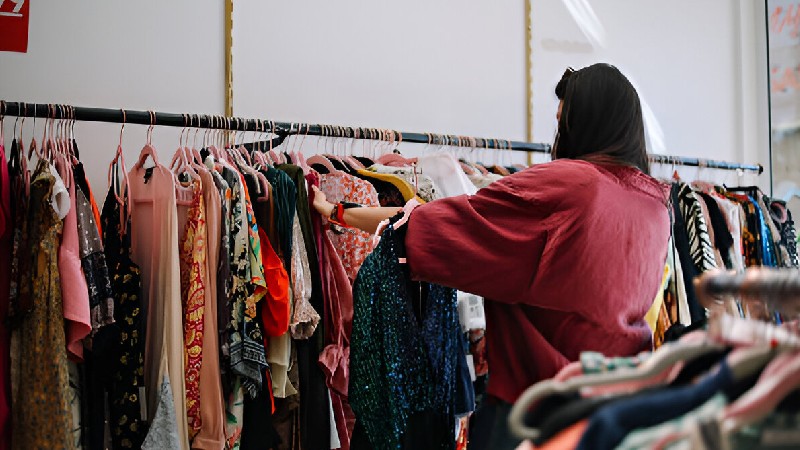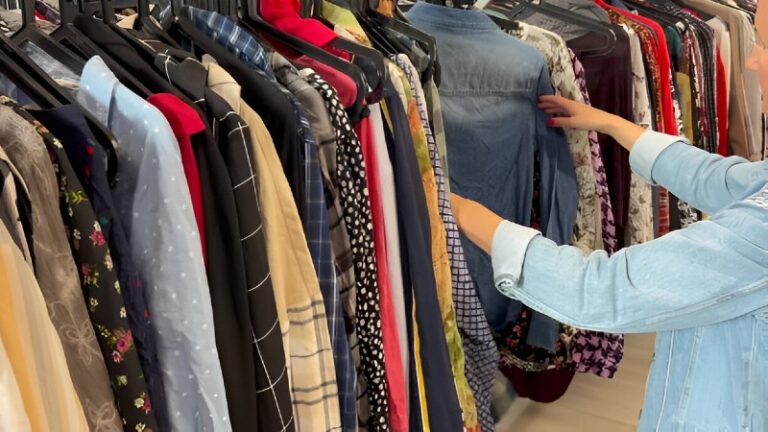The fashion industry has long operated on a cycle of rapid production and consumption, constantly pushing new trends and encouraging disposal. This fast-paced model has come at a significant environmental cost, contributing to alarming levels of textile waste, carbon emissions, and water pollution.
However, a silent revolution is underway, driven by conscious consumers and a growing awareness of sustainability the rise of thrifting and secondhand style. What was once considered a niche pursuit is now a mainstream phenomenon, offering a compelling alternative that allows individuals to express their unique style while making a positive impact on the planet.
The Allure of Secondhand Style
While affordability remains a significant draw, especially for budget-conscious individuals and recessionistas navigating economic shifts, the appeal of secondhand style extends far beyond just cost savings. Today’s thrifters are often seeking:
- Uniqueness and Personal Expression: Fast fashion often leads to wardrobe uniformity. Thrifting, on the other hand, offers a treasure trove of one-of-a-kind pieces that allow for genuine individual expression. From vintage finds that echo bygone eras to discontinued designer items, secondhand shopping enables a truly personalized aesthetic that stands out from the crowd. It’s about curating a look that no one else will have.
- The Thrill of the Hunt: The unpredictable nature of thrift shopping transforms it into an exciting adventure. Each visit to a thrift store or scroll through an online platform is a treasure hunt, where the discovery of a hidden gem be it a perfectly tailored blazer or a retro accessory—brings a unique satisfaction unmatched by conventional retail.
- Quality and Craftsmanship: Many older or designer secondhand items were made with superior materials and construction techniques designed for longevity, a stark contrast to the often fleeting quality of fast fashion. Smart thrifters learn to identify well-made garments that can withstand the test of time, providing excellent value.
Why Secondhand Matters Now More Than Ever
The fashion industry’s environmental footprint is staggering. Consider these impactful statistics:
- Carbon Emissions: Fashion production accounts for over 10% of global carbon emissions, more than all international flights and maritime shipping combined.
- Water Consumption: Producing a single pair of jeans can consume thousands of liters of water – more than a person drinks in a lifetime.
- Textile Waste: An alarming 85% of textiles end up in landfills, where they can take hundreds of years to decompose, releasing harmful greenhouse gases and polluting soil and water sources. For every 100 billion clothing items produced annually, 92 billion end up as waste.
- Microplastic Pollution: Synthetic fabrics commonly used in fast fashion shed microplastics into waterways with every wash, contributing to widespread environmental contamination.
| Environmental Impact of Fashion (New Production) | Environmental Benefit of Thrifting |
| High carbon emissions | Reduced carbon footprint |
| Excessive water consumption | Water conservation |
| Massive textile waste in landfills | Waste reduction, landfill diversion |
| Depletion of raw materials | Resource conservation |
| Pollution from dyes and chemicals | Reduced chemical usage and pollution |
| Exploitative labor practices | Supports ethical consumption |
By choosing secondhand style, consumers actively disrupt this destructive cycle. Every pre-loved garment purchased is one less new item produced, directly reducing demand for resource-intensive manufacturing and preventing textiles from becoming waste. In fact, if every consumer bought just one used garment instead of a new one, it could decrease carbon dioxide emissions by over two billion pounds.
Thrifting as a Community & Cultural Movement

Beyond the individual benefits and environmental urgency, thrifting has evolved into a vibrant cultural movement, especially championed by younger generations like Gen Z and Millennials. These demographics are keenly aware of fast fashion’s drawbacks and actively seek alternatives that align with their values.
This shift is significantly amplified by:
- Social Media Influence: Platforms like Depop, Poshmark, and even Etsy have become virtual thrift havens. Influencers and fashion enthusiasts regularly share their thrift hauls, styling tips, and unique finds, sparking interest and making secondhand shopping aspirational. Many thrifting apps are designed with social media-like features, fostering communities around shared style and sustainable practices.
- Supporting Local Economies and Charities: Many brick-and-mortar thrift stores are run by charities or non-profit organizations. Your purchases directly fund vital community programs, from adult literacy and homeless shelters to job training initiatives. This aspect transforms a fashion choice into a tangible act of social good, fostering community spirit and local economic growth.
Tips for a Rewarding Thrifting Experience
Stepping into the world of secondhand fashion, whether online or in person, is an exciting journey. Here are some tips to maximize your success:
- Do Your Research: Before you go, have a general idea of what you’re looking for. Research local thrift stores and consignment shops; some specialize in vintage, others in designer, and some might have better inventory turnover on certain days. For online thrifting, explore platforms like ThredUp (largest online thrift store), Depop (trendy and unique), Poshmark (peer-to-peer, great for designer finds), Etsy (vintage and upcycled), and eBay (for niche items).
- Inspect Carefully: Since items are pre-loved, always check for stains, tears, missing buttons, or signs of overuse. Feel the fabric for its integrity. Remember, minor flaws can often be fixed, or they might even add to the item’s unique character.
- Know Your Measurements & Be Flexible: Sizing can vary wildly between brands and eras. Knowing your measurements is key. Also, be open-minded! An item might be a size up but fit perfectly, or an unexpected color could become your new favorite.
- Embrace the Hunt & Be Patient: Thrifting is about discovery. Not every trip will yield a jackpot, but persistence often pays off. Enjoy the process of sifting through racks and categories.
- Style with Creativity: Don’t be afraid to experiment. Repurpose items, mix and match eras, or use simple DIY alterations like cropping or adding embellishments to make a thrifted piece uniquely yours. Accessories found secondhand can also elevate any outfit.
The Quality and Cleanliness of Secondhand
Despite its growing popularity, some common misconceptions about secondhand clothing persist:
- Quality Concerns: The notion that thrifted clothes are merely hand-me-downs past their prime is often unfounded. Many thrift stores have meticulous curation processes, only accepting items in good condition. Furthermore, the longevity of well-made vintage pieces often surpasses that of modern fast fashion.
- Hygiene Stigmas: While it’s always wise to wash any garment before wearing it (new or used!), modern washing and sanitization methods ensure secondhand clothes can be just as clean and safe as brand-new items.
These myths are rapidly being dispelled as more consumers experience the high-quality finds and unique style opportunities that thrifting offers.
Conclusion
The rise of thrifting and secondhand style is not just a fleeting trend; it’s a fundamental shift towards a more conscious and circular fashion industry. With global secondhand markets projected to reach significant valuations in the coming years, and younger generations actively embracing this mode of consumption, the future of fashion looks increasingly sustainable.
By unearthing fashion gems responsibly, we’re not just dressing ourselves; we’re actively participating in a movement that champions individuality, supports communities, and profoundly benefits our planet. It’s a win-win for your wardrobe, your wallet, and the environment. So, the next time you consider a new purchase, remember the endless possibilities waiting to be discovered in the world of secondhand fashion.
Frequently Asked Questions (FAQs)
What is thrifting or secondhand style?
Thrifting involves purchasing pre-owned clothing and accessories, typically from thrift stores, consignment shops, or online marketplaces, as an alternative to buying new items.
Why is thrifting considered sustainable fashion?
Thrifting reduces demand for new production, conserving resources like water and energy, and diverting textiles from landfills, thereby minimizing the fashion industry’s environmental footprint.
What are the main benefits of buying secondhand clothes?
Benefits include cost savings, finding unique or vintage pieces, reducing environmental impact, supporting local charities, and promoting a circular economy.
Are secondhand clothes clean and hygienic?
Yes, with proper cleaning and sanitization, secondhand clothes are perfectly hygienic. It’s always recommended to wash any garment before wearing it, whether new or used.
How can social media influence thrifting trends?
Social media platforms and influencers showcase thrift hauls and styling ideas, making secondhand shopping aspirational and accessible, driving interest and engagement among younger generations.
What are some challenges of thrifting?
Challenges can include accessibility to physical stores, ensuring quality and fit of pre-loved items, and overcoming lingering misconceptions about secondhand goods.
Where can I find good secondhand clothing?
You can find secondhand clothing at local thrift stores, consignment shops, charity stores, and online platforms such as Depop, Poshmark, ThredUp, and local online marketplaces.


